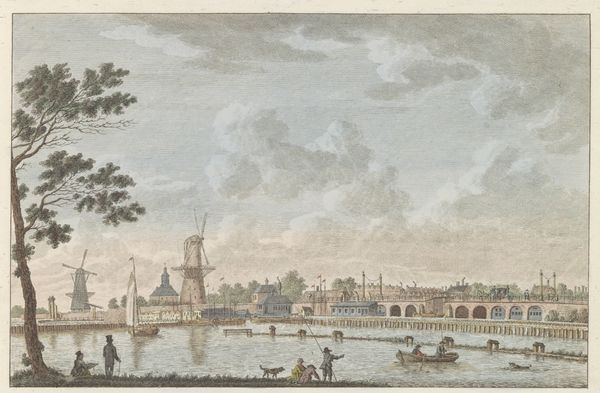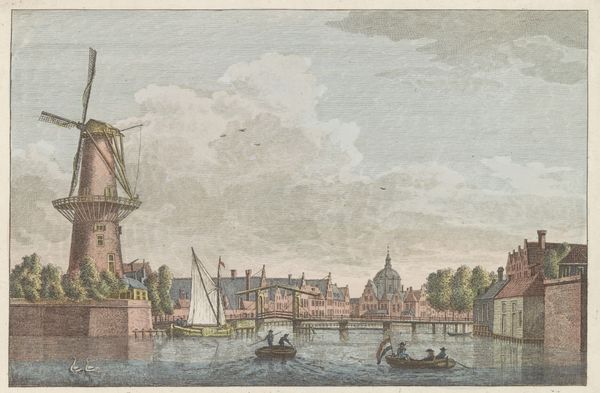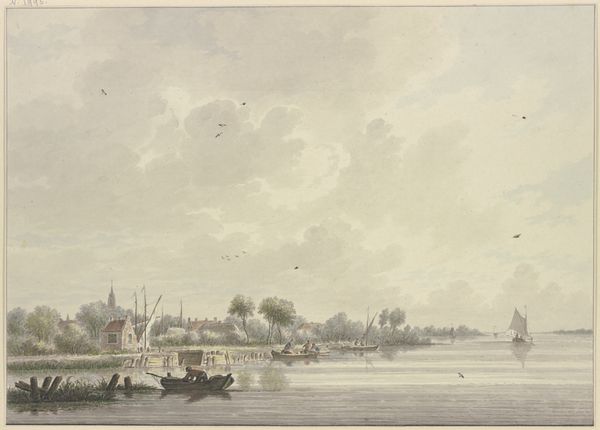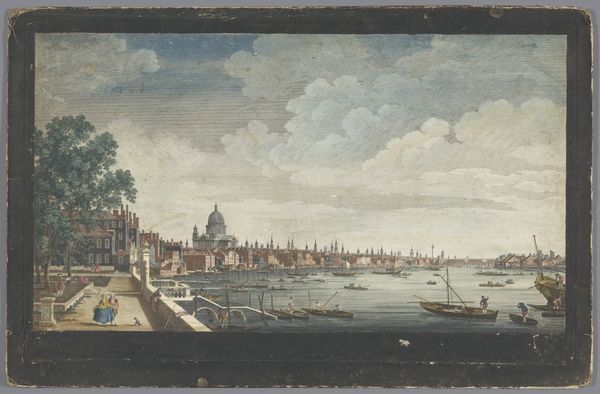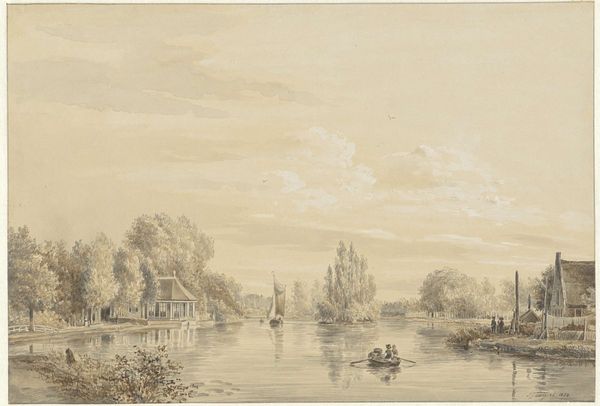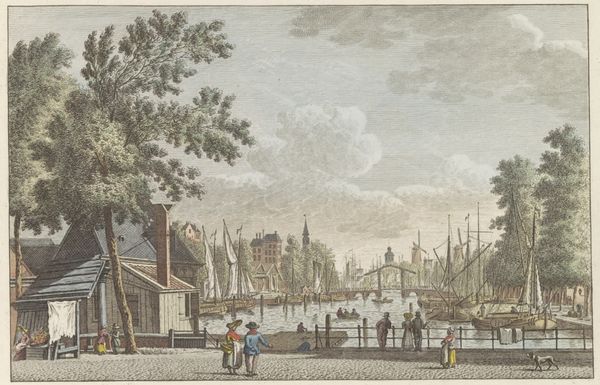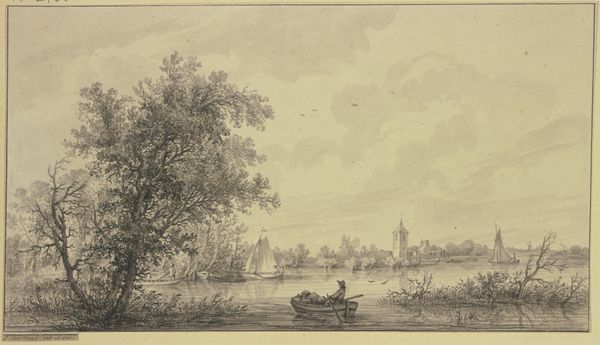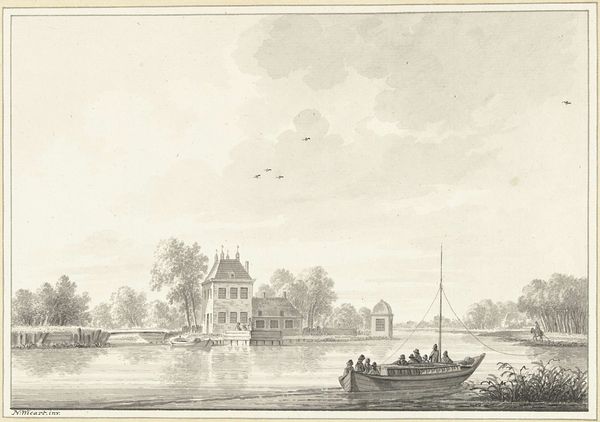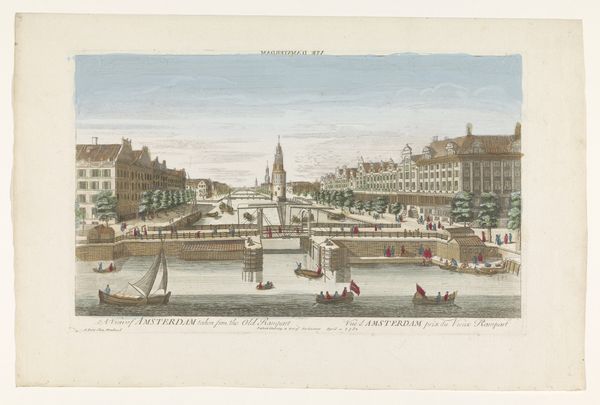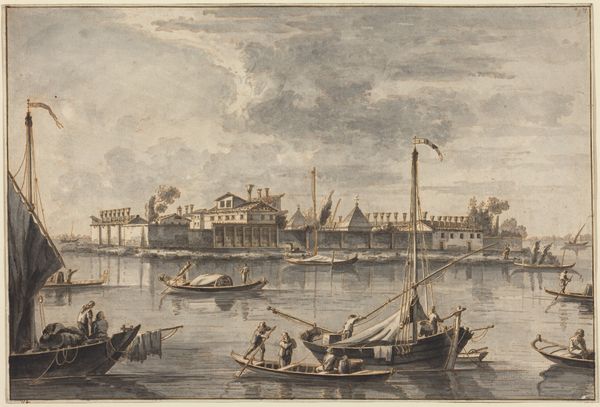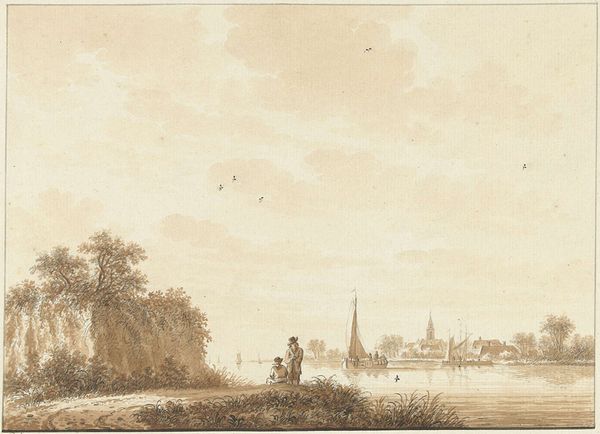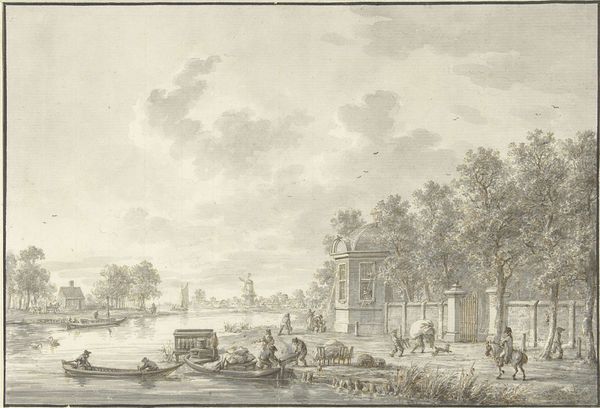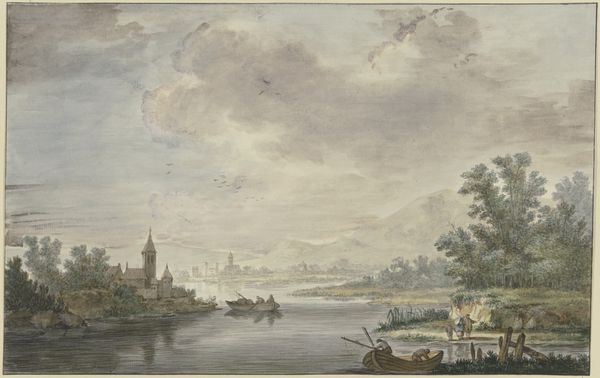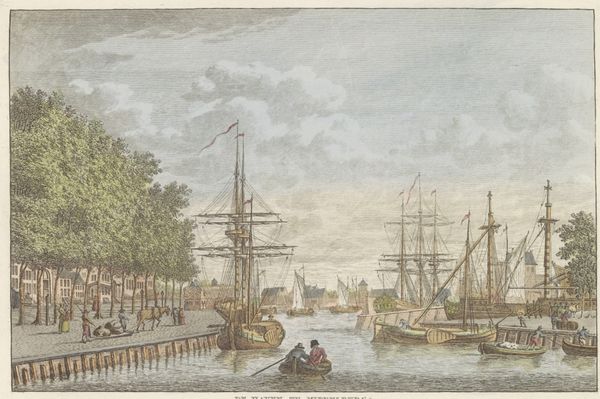
drawing, painting, paper, watercolor
#
drawing
#
neoclacissism
#
painting
#
landscape
#
paper
#
watercolor
#
coloured pencil
#
cityscape
#
watercolour illustration
#
genre-painting
Dimensions: height 172 mm, width 247 mm
Copyright: Rijks Museum: Open Domain
Editor: This is "Spaarne te Haarlem," a cityscape by Carel Frederik Bendorp, created around 1790. It’s a watercolor drawing on paper, and the soft colors give it a peaceful, almost dreamlike quality. What symbols stand out to you in this tranquil scene? Curator: Immediately, I see the careful juxtaposition of nature and industry. The river itself, the Spaarne, serves as a pathway – a flowing artery connecting the city to the wider world. Waterways speak of trade, travel, and the continuous flux of human activity. Even the windmill, though quaint, symbolizes industry harnessed for everyday life. What thoughts come up when considering windmills, or any form of classical industry? Editor: The windmill seems to contrast the boats of people, like an earlier time, now long gone... It makes me think of human effort versus natural, repeatable systems. How can you see the windmill as relating to its landscape? Curator: Exactly! Notice its prominent placement. These windmills not only ground the people living here, but allowed their work to continue onwards. You may also note that windmills act as an anchor and axis point for local orientation - so much so that Dutch landscape paintings were legally mandated to depict local landmarks like windmills so that buyers had an intuitive awareness of its depiction of place. The buildings in the background aren't accidental either. How do they strike you, when compared to modern architecture? Editor: It gives me a sense of permanence... solidity. Almost like those structures contain the memory of the town itself. Do those choices of objects tell something about the Netherlands in this time? Curator: Absolutely. The prevalence of the maritime, the suggestion of trade…it speaks to the Netherlands’ Golden Age, a time of immense prosperity built on its nautical strength. Each element here reflects a national identity deeply intertwined with the sea and sky, yet also anchored to tradition. Each object serves as a micro-symbol, compiling into a grand statement. Editor: I hadn’t thought about how deliberately these scenes might be crafted. It's fascinating how much cultural history is embedded within a seemingly simple landscape. Thank you. Curator: Indeed. By understanding the visual language, we unlock a richer understanding of history, one image at a time.
Comments
No comments
Be the first to comment and join the conversation on the ultimate creative platform.
